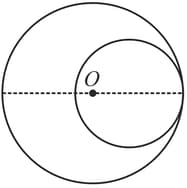Embibe Experts Solutions for Chapter: Centre of Mass, Momentum and Collisions, Exercise 1: Assam CEE 2017
Embibe Experts Physics Solutions for Exercise - Embibe Experts Solutions for Chapter: Centre of Mass, Momentum and Collisions, Exercise 1: Assam CEE 2017
Attempt the practice questions on Chapter 8: Centre of Mass, Momentum and Collisions, Exercise 1: Assam CEE 2017 with hints and solutions to strengthen your understanding. EMBIBE CHAPTER WISE PREVIOUS YEAR PAPERS FOR PHYSICS solutions are prepared by Experienced Embibe Experts.
Questions from Embibe Experts Solutions for Chapter: Centre of Mass, Momentum and Collisions, Exercise 1: Assam CEE 2017 with Hints & Solutions
In the figure given below, the mass on the left is moving to the right with a constant velocity and after colliding inelastically with the mass on the right, sticks to it. If the spring of spring constant was initially at its equilibrium position, what is the amplitude to the resultant oscillation?

A bullet of mass is fired from a rifle of mass and the total kinetic energy produced by the explosion is . Then the kinetic energy of the bullet and the rifle are
The momentum of a body increases by , its kinetic energy increases by (assume that mass does not change)
Two blocks of masses and are connected by a spring of negligible mass and placed on a frictionless horizontal surface. An impulse gives a velocity of to the heavier block in the direction of the lighter block. Then the velocity of centre of mass is,
A ball is released from a height . It hits the floor below and keeps bouncing repeatedly until it comes to rest. If the coefficient of restitution of the head-on collision between the ball and the floor is , the total distance covered by the ball (vertically) from the point of its release to its rest position is given by:
A shell of mass is fired with a speed at an angle with the horizontal such that it explodes into two equal fragments at the highest point of its trajectory. If one fragment falls vertically, the distance at which the other fragment falls from the point of projection will be,
A circular plate of uniform thickness has a diameter of . A circular portion of diameter is removed from one edge of the plate as shown in the figure below. The position of centre of mass of the remaining portion is

